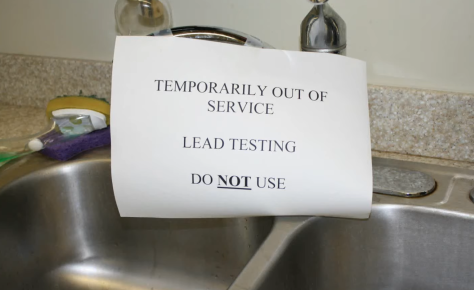As the next round of state tests approach, it is important to review the facts around opting out of state tests. Each year misinformation about the impact of opt-outs is presented as fact to parents, as school district officials attempt to convince parents to have their children take the state tests. This fact sheet attempts to clear up the misinformation by reviewing the federal requirements for participation in the state assessments and potential consequences of opting-out for districts and students.
NYSUT fully supports a parent’s right to choose what is best for their children. Despite the temporary moratorium that eliminates certain consequences of the state tests, these tests are still administered and used for “advisory” purposes and for identifying low-performing schools.
HOW DO YOU OPT YOUR CHILD OUT OF THE STATE TESTS
The State Education Department (SED) no longer questions a parent’s right to opt their child out of the state tests but has not adopted a formal state policy. Therefore, the opt-out process is different in each district. You should check with your school principal or district administrator to find out the process in your district. If the district does not have a standard form, send the principal a letter stating the tests you do not want your child to take part in and request the district provide a productive alternative activity. All requests for opt-outs should be made in writing to ensure a paper trail should a question arise about whether you requested that your child not take the state tests. The letter should be provided to the school principal prior to the start of the state testing period. The sooner the letter is provided the less likely the district is to dispute your request. Some parents provide the letter on the first day of school.
FEDERAL REQUIREMENT FOR TESTING
The grades 3-8 ELA and mathematics state assessments are required by the Federal Elementary and Secondary Education Act (ESEA). In December 2015, ESEA was reauthorized as amended by the Every Student Succeeds Act (ESSA). ESSA continues the requirements for statewide standardized tests1 and that 95 percent of all students and subgroups be assessed annually. The Federal role in state accountability systems has been reduced under ESSA. ESSA places responsibility on states to develop a plan that meets the statutory requirements. States are responsible for most of the decisions regarding the design and consequences of the accountability system, including treatment of opt-outs.
New provisions in ESSA requires districts to inform parents and guardians of opt-out policies and affirms a parent’s right to have their children opt-out of statewide standardized tests, where state and local policies permit. However, SED has taken the position that since New York State law is silent on the right to opt-out, there is no obligation to inform parents.
- [ESEA III2 (e)(2)(A)]“IN GENERAL.—At the beginning of each school year, a local educational agency that receives funds under this part shall notify the parents of each student attending any school receiving funds under this part that the parents may request, and the local educational agency will provide the parents on request (and in a timely manner), information regarding any State or local educational agency policy regarding student participation in any assessments mandated by section 1111(b)(2) and by the State or local educational agency, which shall include a policy, procedure, or parental right to opt the child out of such assessment, where applicable.
- 1ESSA also requires statewide assessments in ELA and math once in high school and grade span testing in science.
NEW YORK STATE PLAN
ESSA requires the state utilize a methodology for calculating student achievement that includes all continuously enrolled students, regardless of whether or not they took the test. Schools must report aggregate participation rates for all accountability subgroups in all schools. ESSA also makes it clear: it is up to states to determine how participation rates will factor into the state accountability system.
SED has stated publically that they do not intend to identify schools for improvement if the schools have high academic achievement but low participation rates. SED has chosen to calculate student achievement using two different methodologies, one that includes all enrolled students to meet the requirement of the law and a second calculation based only on those students that participate in the State assessments. These two measures will be combined to create a composite academic achievement measure. SED intends to use the second calculation to differentiate schools with low participation rates from those with actual low achievement. However, by combining these measures, the results will be an academic achievement measure that will be lower in schools with high opt-outs. Based on the new list of CSI schools released January 17, 2019, it appears opt-outs had an effect on mislabeling schools as underperforming.
POTENTIAL CONSEQUENCES OF OPT-OUTS
One of the more persistent rumors is that students who opt-out will automatically receive a “level one” score that will become part of their permanent record. This is false. When reporting individual students that opt-out, districts use a code that indicates refusal and no score is reported for the child. These students will be considered to have no valid test score.2
There are some potential consequences for schools:
- Districts with schools that persistently and substantially do not meet participation rates will be
- required to submit a corrective action plan that will escalate over time. Superintendents will be pressured to improve participation rates. There are some districts that have attempted to discourage opt-outs through the use of punitive measures, such as sit-and-stare policies or requiring students to take alternative exams. NYSUT opposes sit-and-stare policies or requiring alternative exams.
- SED has stated that it does not support any withholding of state aid from schools or diversion of school improvement funds from those schools that need them most because of participation rates. However, the methodology used for calculating student achievement will result in a lower performance level for schools with high opt-outs. This, combined with the use of the growth measure as another high-stakes indicator, may lead to some schools being mislabeled as underperforming. A school identified as among the lowest performing in the state that is also implementing a participation rate improvement plan will be eligible for removal from the school’s accountability status, provided the school is not performing at the lowest level on the academic achievement measure.
- The 95 percent participation rate will be a criterion for identifying whether a school can be designated as a “Recognition (high performing)” school. This would be consistent with past practice.
Although originally intended to evaluate programs, the assessments are used by some districts as one of the criteria for placement decisions and by the state to determine whether or not a student should receive Academic Intervention Services (AIS). Schools must use multiple measures in making such determinations. Actions by the state Legislature and Board of Regents have minimized how the assessments can be used. Parents should ask to review the district policies for how students that opt-out will be evaluated for both AIS and placement in advanced courses.
Additional details are available in the NYSUT Fact Sheet Opting Out of State Tests on the nysut.org web site: https://www.nysut.org/resources/all-listing/research/fact-sheets/fact-sheet-opting-out-educators
Download the refusal letter:
Download the above Fact Sheet:



